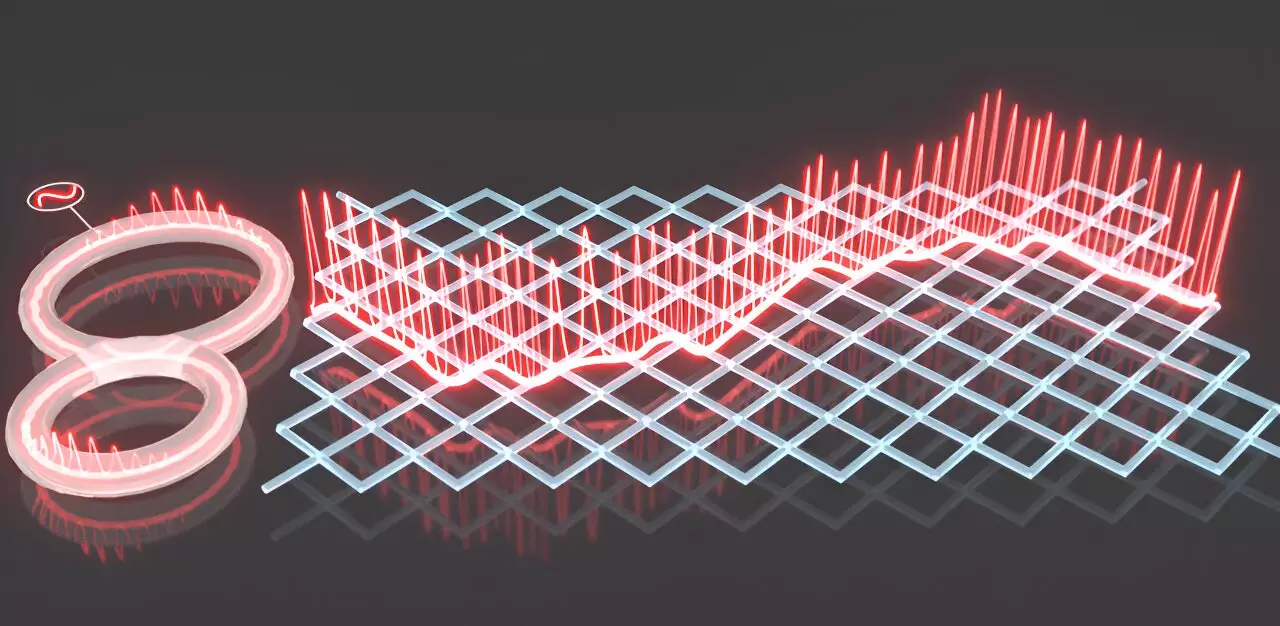Wave physics has long been characterized by its intricate dance between theory and experimentation, captivating researchers across various fields, from solid-state physics to photonics. Among the many phenomena within this expansive landscape, coherent transport effects stand out, with Bloch oscillation (BO) being a highlight. This phenomenon encapsulates the repetitive motion of electrons in crystalline solids influenced by a direct current (DC) electric field. However, a more enthralling variant has emerged called Super-Bloch oscillations (SBOs). Despite their potential, SBOs have largely escaped comprehensive exploration due to their demanding experimental prerequisites.
SBOs represent an extended version of BOs, requiring the simultaneous application of both DC and alternating current (AC) electric fields. While they promise a richer understanding of wave dynamics, their practical investigation has proven to be particularly formidable, demanding longer coherence times for the particles involved. This raises questions about the feasibility of exploiting these oscillations in practical applications, revealing the challenges that lie at the intersection of cutting-edge physics and experimental limitations.
Understanding the Collapse Phenomenon in SBOs
What truly sets SBOs apart is an intriguing phenomenon known as the “collapse” of SBOs, a process whereby coherent oscillations are thwarted within a driving AC electric field. This results in the localization of oscillation patterns, an effect that has perplexed scientists due to its seeming contradiction to the fundamental properties of wave mechanics. When exploring this collapse within the domain of AC-driving regimes, the absence of prior experimental success further signifies the mystique surrounding SBOs. Traditional studies have predominantly focused on conventional sinusoidal AC-driving scenarios, leaving broader dimensions and applications unexamined.
Recent groundbreaking work by researchers from Wuhan National Laboratory for Optoelectronics, Huazhong University of Science and Technology (HUST), and the Polytechnic University of Milan has taken strides to bridge this gap. They meticulously crafted an experimental setup that employs both DC and nearly detuned AC-driving fields to synthesize a temporal lattice. Remarkably, they successfully realized SBOs in the robust driving conditions, which was previously an uncharted territory in wave physics.
A Breakthrough in Observational Capabilities
For the first time, observations of SBO collapse have unfurled a new chapter in coherent wave manipulation. Through innovative adjustments to the synthetic electric fields, the researchers managed to demonstrate not just the phenomenon of oscillation amplitude reduction but also a pivotal reversal in oscillation direction at particular driving amplitudes. These observations hold significant implications for our understanding of wave dynamics, encouraging a re-evaluation of traditional concepts within wave physics.
What is compelling is the specificity in the conditions leading to this collapse, particularly when the amplitude-to-frequency ratio aligns with the root of the first-order Bessel function. Such a detail invites an exploration of how precise manipulations can yield major shifts in wave behavior. The ability for researchers to induce a complete inhibition of oscillation while simultaneously reversing its direction at the collapse point brings forth transformative avenues to explore medium interactions and coherence properties of waves.
Expanding the Horizons of Wave Dynamics
By generalizing SBOs beyond just the simplistic sinusoidal driving cases into an arbitrary-wave driving framework, the researchers have opened doors to a realm where tunability becomes a key asset. The prospect that SBOs could be engineered under various driving formats allows researchers to tailor conditions to suit specific applications, potentially harvesting yet-to-be-realized advantages in photonics, matter-wave physics, and beyond.
The Fourier analysis of the resulting oscillation patterns—classically used to decipher complex wave phenomena—has also formed an integral part of their research. This analysis allows for deeper insight into the rapid oscillatory behavior of SBOs, creating a rich nexus between theoretical understanding and observable reality.
The groundbreaking strides made by these researchers hint at an exciting future where the complexities of wave physics may be more elegantly harnessed, ensuring that the functions of materials and devices evolve alongside our growing mastery of wave interactions. Researchers are poised at the precipice of a new era in wave physics, where coherent control may become more than just an ambitious goal but a tangible reality. Their findings challenge the scientific community to delve deeper, to confront the nuances of oscillatory phenomena, and to push the boundaries of conventional wave physics into uncharted territories.


Leave a Reply